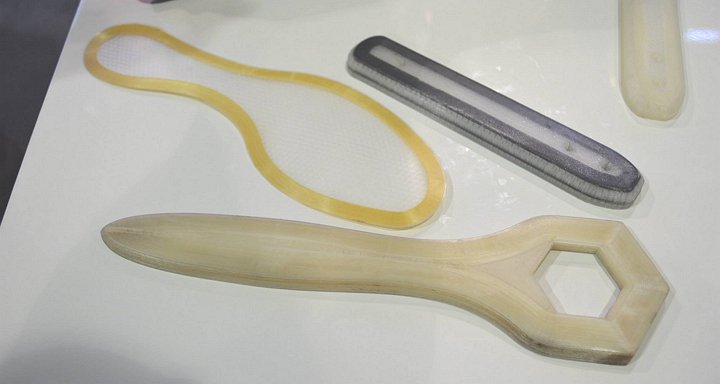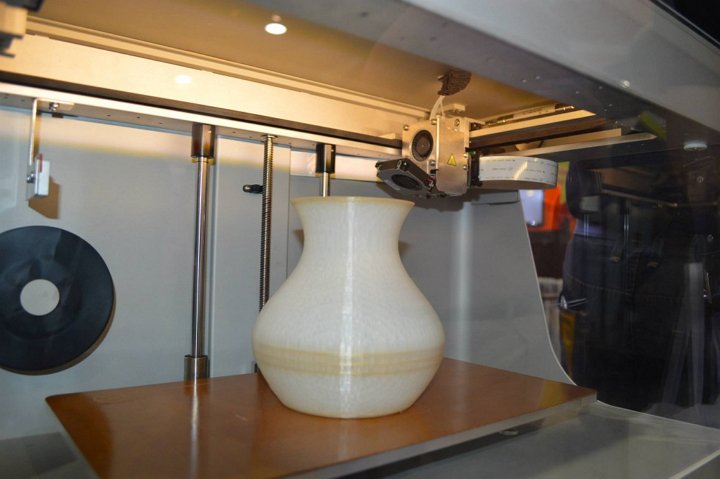New Printer Options
We no longer sell the Markforged line of 3D printers, but we do offer the leading open source material printers from German RapRap, incredible printers from EnvisionTEC, and latest industrial printers from MakerBot. Check them out below.
The Mark One 3D Printer, a product of MarkForged, can print in carbon fiber, fiberglass, Kevlar, and nylon formulations. The printer has a build volume of 320mm x 132mm x 160mm, and uses one nozzle to print plastic material while a second nozzle prints fiber material.
When finished, these parts resemble traditionally fused filament fabrication (FFF) printed parts, but with the additional strength of the strands of fiber. Even including one or two layers of fiberglass or carbon fiber in a part dramatically increases its rigidity.
According to MarkForged’s Creative Director, Jeff Klein, the specifications for the strength of these parts have now been officially benchmarked. After months of testing, MarkForged released these final material specifications for their FFF printing materials, as well as their Continuous Filament Fabrication (CFF) printing materials.
Initial estimates stated that the carbon fiber CFF was up to 5 times stronger and 20 times stiffer than Acrylonitrile Butadiene Styrene (ABS) printed parts. However, testers – including third parties – discovered that parts made of carbon fiber CFF were actually up to 30 times stronger and 30 times stiffer than their ABS counterparts.
These results took into account data based on the compressive, flexural, heat deflection temperature, and tensile testing for MarkForged’s line-up of fiber materials.
Klein offered the following statistics about the materials:
- Their carbon material has the highest strength-to-weight ratio and thermal conductivity, making it the ideal material for products that need high levels of stiffness and strength.
- The fiberglass formulation is the most cost-effective; it offers similar levels of stiffness to the carbon material but has 40% of its stiffness and twice its weight.
- The Kevlar formulation has the best abrasion resistance and greatest flexibility, making it a great fit for products that need extended durability and impact resistance.
The test pieces used to compile the data were fiber reinforced unidirectionally.
The Mark One 3D Printer is capable of using a large number of fiber reinforcement patterns when printing in order to make both quasi-isotropic and anisotropic ply constructions. The data sheet provides reference and comparison material properties, based on a set of standards-compliant ASTM plaques printed with a production version of the device.
According to Klein, the company’s ultimate goal is to vary part and material performance by the end-use conductions, ply design, and part design. The data should not be used to establish design, quality control, or specification limits.
Interested in learning more about 3D printers? Read more here. Or why not contact us?




